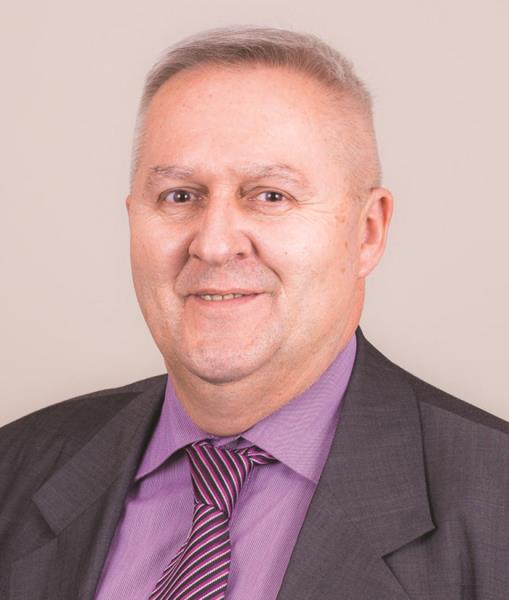02 July 2021

Mladen Vratonjic, chair, The Critical Communications Association (TCCA)
Users of mission critical communications typically operate in environments and/or circumstances that are dangerous, challenging, and perhaps even life threatening. It is therefore essential that they need to trust the communications services that support them. In extreme situations, the communications channel is of vital importance – it can literally mean the difference between life and death.
For communication services to be truly mission critical, they need to be available always and everywhere. Natural disasters, terrorist attacks, road, rail or air accidents can happen anywhere - it is impossible to predict when and where incidents will take place. Therefore, excellent geographic radio coverage is the most important aspect for high service availability. The mission critical network must be resilient, with redundancy, fallback options and off-network communications capability.
And of course, the communication services need to match user requirements, to seamlessly support users’ operational processes with interoperable services and prioritisation. Communication needs vary depending on incidents and response procedures, so the communications structure must be able to adapt efficiently. Examples of this include creating new communication groups, managing group memberships and combining different groups on the fly.
While there is an enormous amount of work going into making commercial 4G networks perform well enough to be considered mission critical, this is an ongoing process. It will eventually be the choice for users who need broadband services, but at present there is no other technology that can surpass the quality of TETRA as the service of choice for mission critical users.
Designed from its inception as a mission critical communications bearer, TETRA was first operational in the late 1990s and for that reason some term it an ‘old’ technology. It is indeed a mature technology, well proven and in use worldwide, but remains very much current, maintained and enhanced on a regular basis.
TETRA fulfils the operational requirements of a variety of end users. Today it is considered as the technology of reference across all mission and business critical market sectors, including but not limited to public safety and security, transport, utilities, extraction and mining, critical national infrastructure protection and the military.
TETRA is deployed across the African continent for public safety, transport, mining, and other markets. A nationwide TETRA system announced for the Ministry of Interior in Angola is part of the country’s initiative to modernise the public security and safety service. The City of Cape Town, Cape Town International Airport, the Botswana Police Service and the South African Police Service are all TETRA users. The South African wine region of Stellenbosch and its municipal area are equipping public safety personnel such as police officers and firefighters with the mission-critical service.
Critical users need particular features to enable them to work effectively. These include secure encrypted networks, calls and two-way radio messaging, assured coverage, capacity and call quality, the ability to send voice, data and images, direct mode operation which allows rapid communications between groups of workers, for instance a first responder team at a major incident, and managed fall-back for additional resilience. In an emergency, voice will always be the most immediate form of communication, and the clarity of TETRA voice services is guaranteed through outstanding noise suppression capabilities and a special voice codec for optimised voice performance in challenging noisy areas.
Although TETRA is not a broadband bearer, its narrowband data capabilities have supported critical users for more than two decades. TETRA’s data service was put to good use during the 2010 Football World Cup, hosted by South Africa. With operations over 37 venues, organisers utilised TETRA messaging to enable users at multiple venues to simultaneously submit standardised status updates and incident reports to the Command Centre in Johannesburg. This minimised voice traffic on the Johannesburg City TETRA network, ensuring the network was not overloaded with the huge amount of traffic.
TETRA has been designed from the bottom up to meet the needs of critical users. The European Telecoms Standards Institute (ETSI) develops and enhances the TETRA standard, and the number of dedicated features and functions now exceeds 300, and these will be relevant for many years into the future. Investments in infrastructure easily cover 10-15 years in the core and even longer for base stations. Devices have been shown to have a typical lifespan of seven to ten years in the field. Users, operators and investors rely on the very well documented standard, constantly being maintained, evolved and improved.
Through TCCA’s Interoperability (IOP) process, in which all major TETRA vendors participate, TETRA provides multi-vendor choice. This allows customers to switch from one supplier to another without sacrificing network capabilities. TCCA’s world-leading IOP process is managed by TCCA’s Technical Forum, with results independently verified. The process was developed to enable a truly open market for TETRA equipment and systems. This benefits both the end users in terms of a wide portfolio of compatible equipment, competitive pricing and rapid development of new products; and the industry in terms of a wider accessible market, faster market take-up and better possibilities for investment in innovation.
Many national TETRA networks have been upgraded in the last five years and had their life extended – some have maintenance contracts beyond 2035.Control room vendors have their systems tightly integrated with TETRA networks, and many users have optimised operational processes around the flexible capabilities of TETRA.
TETRA is essential to the organisations using it; it is integral to the operational procedures of mission critical users. If organisations want to evolve to broadband in the future, those operational procedures will also need to evolve. Simply switching TETRA off and switching critical broadband on in one go will not be possible, so TETRA and broadband will co-exist for quite some time until new procedures are written, accepted, trusted and adopted by the users.







